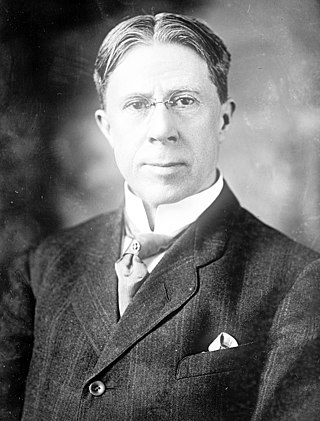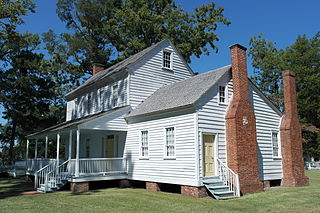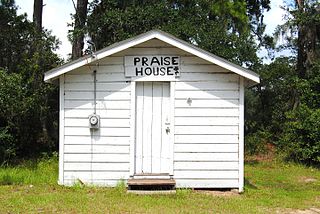
Washington is a city in Beaufort County, North Carolina, United States, located on the northern bank of the Pamlico River. The population was 9,744 at the 2010 census. It is the county seat of Beaufort County. It is commonly known as "Original Washington" or "Little Washington" to distinguish it from Washington, D.C. The closest major city is Greenville, approximately 20 miles (32 km) to the west.

Beaufort is a town in and the county seat of Carteret County, North Carolina, United States. Established in 1713 and incorporated in 1723, Beaufort is the fourth oldest town in North Carolina . On February 1, 2012, Beaufort was ranked as "America's Coolest Small Town" by readers of Budget Travel Magazine.

Beaufort is a city in and the county seat of Beaufort County, South Carolina, United States. Chartered in 1711, it is the second-oldest city in South Carolina, behind Charleston, which was established in 1670. A city rich in history, culture, southern hospitality, and a seaside charm, Beaufort is affectionately known as the "Queen of the Carolina Sea Islands". The city's population was 13,607 at the 2020 census. It is part of the Hilton Head Island–Bluffton metropolitan area.

Auldbrass Plantation or Auldbrass is located in Beaufort County, South Carolina, near the town of Yemassee. The guest house, stable complex and kennels were designed and built by Frank Lloyd Wright from 1939 to 1941. It is one of two structures that Wright designed in South Carolina. The property was purchased in the 1930s by Charles Leigh Stevens. Wright designed the plantation to serve as a retreat for Stevens. During Stevens' retreats he would use the property for riding and hunting excursions.

John Humphrey Small was an American attorney and politician who served eleven terms as a U.S. Representative from North Carolina from 1899 to 1921.

Beaufort Historic District is a historic district in Beaufort, South Carolina. It was listed on the National Register of Historic Places in 1969, and was declared a National Historic Landmark in 1973.

The Barnwell-Gough House, also known as Old Barnwell House, is a house built in Beaufort, South Carolina in 1789.

Bath Historic District is a historic district in Bath, Beaufort County, North Carolina. The district is now a North Carolina Historic Site belonging to the North Carolina Department of Natural and Cultural Resources and known as Historic Bath, and includes a visitor center offering guided tours of the Bonner House and Palmer-Marsh House, which is also a National Historic Landmark. Visitors can also tour the Van der Veer House and St. Thomas Episcopal Church.

The Palmer-Marsh House is a historic house museum and National Historic Landmark on Main Street south of Carteret Street in Bath, North Carolina. Built in 1744, it is one of the oldest residences in North Carolina, and is a well-preserved example of a large colonial town house with a commercial space built in. It was declared a National Historic Landmark in 1970. It is now a North Carolina state historic site, and is open for tours.

The Robert Smalls House is a historic house at 511 Prince Street in Beaufort, South Carolina. Built in 1843 and altered several times, the house was designated a National Historic Landmark in 1974 for its association with Robert Smalls (1839-1915). Smalls, born into slavery, achieved notice for commandeering the CSS Planter and sailing her to freedom during the American Civil War. After the war he represented South Carolina in the United States House of Representatives during Reconstruction.

John Mark Verdier House, also known as Lafayette Building, is a building in Beaufort, South Carolina. It was built by John Mark Verdier, a French Huguenot, in 1804. The house typified Beaufort's gracious antebellum architectural style. It was a focal point of the town, a visible statement reflecting Verdier's significant wealth from trading indigo and growing sea island cotton.

This is a list of the National Register of Historic Places listings in Beaufort County, South Carolina.

Cohasset is a house in northeastern Hampton County, South Carolina about 5 mi (8 km) north of Hampton, South Carolina near the unincorporated community of Crocketville. It was built about 1873. It is north of U.S. Route 601. It was named to the National Register of Historic Places on July 24, 1986.

Bonner House is a historic home located at Bath, Beaufort County, North Carolina. It was built about 1835, and is a two-story frame dwelling with a one-story wing and rear shed addition. It sits on a brick pier foundation and has a side-hall plan. It is on land once owned by John Lawson, explorer and founder of Bath.

This list includes properties and districts listed on the National Register of Historic Places in Beaufort County, North Carolina. Click the "Map of all coordinates" link to the right to view an online map of all properties and districts with latitude and longitude coordinates in the table below.

Eddings Point Community Praise House is a historic church located on Saint Helena Island near Frogmore, Beaufort County, South Carolina. It was built about 1900, and is a narrow, one-story gable roofed building of frame construction with the entrance in the gable end. It is significant as one of four known extant African-American praise houses on St. Helena Island, and was a central place in the religious and social life of the black islanders.

Washington Historic District is a national historic district located at Washington, Beaufort County, North Carolina. It encompasses 512 contributing buildings and one contributing structure in the town of Washington. They include a variety of institutional, commercial, and residential buildings primarily dating from the late 19th and early 20th centuries. Notable buildings include the Beaufort County Courthouse, Havens and Fowle warehouses, Mayo Law Office, Marsh House, Myers House, Hyatt House, Griffin House, Rodman House, Elmwood, Firehouse and City Hall, Post Office and Federal Courthouse (1913), railroad station, Presbyterian church, Saint Peter's Episcopal Church, First Methodist Church (1899), Singleton Primitive Baptist Church, Blount-Bragaw Building (1901-1904), Minor House, and George T. Leach House.

Beaufort Historic District is a national historic district located at Beaufort, Carteret County, North Carolina. It encompasses 16 contributing buildings in the oldest section of the town of Beaufort. The buildings include notable examples of Queen Anne and Greek Revival, and Gothic Revival style architecture. Located in the district are the separately listed Gibbs House, Jacob Henry House, and Old Burying Ground.

Rosedale, also known as Frew's Folly, is a historic plantation house located at Charlotte, Mecklenburg County, North Carolina. It was built about 1815, and is a Federal style frame dwelling. It consists of a 2+1⁄2-story, three bay by two bay, central block flanked by 1+1⁄2-story wings. It is sheathed in molded weatherboard and rests on a stone basement. Each section has a gable roof. The central block is flanked by exterior brick chimneys.






















